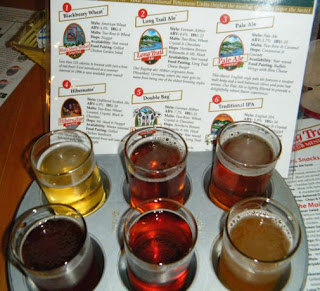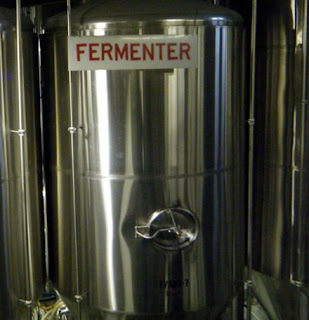The Vermont town has about twice the areal extent of "our" Bridgewater in Massachusetts but with about 1/20th the population. It encompasses four hamlets: Bridgewater Village, Bridgewater Corners, West Bridgewater, and Bridgewater Center, the last of which was once incongruously known as Briggs. In Massachusetts, the three "Bridgewaters" are incorporated as separate towns (each with its own government), but all of the places bearing the name in Vermont are legally part of the same town.
 |
| Image of all four hamlets; click image to enlarge. CLICK HERE to browse on Google Maps |
Readily available online sources provide more historic than contemporary information about this Bridgewater, aptly reflecting its greater relative prominence in the past. From 1820 to 1830, its population doubled to 2,320; at 980, the population is now less than it was two centuries ago. An excerpt from Hayward's New England Gazetteer of 1839 also reveals that sheep were even more numerous, with an ovine population of 6,000! A decade or so later, overgrazing by sheep was a key factor leading George Perkins Marsh -- of nearby Woodstock -- to write Man and Nature: Physical Geography as Modified by Human Action. This book -- considered to be the first modern geography book -- sparked the first conservation movement in the United States. His home a few miles downstream from Bridgewater is now a National Historic Park dedicated the study of conservation. I have written a brief article about that park and have enjoyed bringing students to it.
Although I have passed through Bridgewater a few times -- at least once with Pam and Paloma -- we did not make any deliberate attempt at a visit until this past weekend, as an outing during a delightful stay at the Golden Stage Inn, which our Bridgewater (MA) friends recently purchased. It was once an actual stage coach stop and is now a delightful B&B on five acres in the tiny village of Proctorsville.
On previous drives through Bridgewater in previous years, I remember noticing only some declining and even defunct properties. Just a few minutes of research, however, revealed what must have registered -- however dimly -- on my consciousness from reading beer bottles over the past decade or so: Bridgewater Corners is home to Long Trail Brewing, one of the premium breweries in the Green Mountain State. The brewery is named, by the way, for the Long Trail, a north-to-south transect that inspired -- and is partly conterminous with -- the Appalachian Trail.
The brewery provided all we had hoped for -- good pub food (including jalapeno poppers!), a nice variety of beers, and a furtherance of our brewing education. Because the somewhat crummy, wet weather (about 10 degrees too warm) had driven many skiers inside, Long Trail was quite crowded. When we return -- and we certainly will -- I would like to spend a bit more time exploring the brewery and less time waiting for a table. We would also like to spend some time on the Long Trail itself. From what I can tell (online maps are not very detailed), the trail does not go through the brewery itself, but the trail certainly inspires the company and many of its customers.
Since we began brewing our own beer (mainly IPAs so far) in September 2010, we have been trying to learn what we can, and we found the brewer on duty at Long Trail to be knowledgeable, helpful, and very welcoming to us as novice fellow brewers. We have no delusions of adequacy in this area, as we are very much amateurs working from kits, but I have found that the men and women who brew beer (and ale, et cetera) are very generous, and the young brewer at Long Trail was no exception. During the course of our brief conversation, he described how he had gotten from our kit-only stage to his current role, and also mentioned several competing commercial breweries where we could see particular practices or techniques.
Herewith, a few photos (click each to enlarge):
We have one of these, too. But ours is plastic and sits on the counter.
This one at Long Trail is about 20 feet tall.
 |
| We do not usually wait in restaurants, even special ones. But in the interest of blogging and beer education, we made an exception. Despite the long wait, we ended up happy campers. It was good to be in a brewery with a vexillogical bent. |
 |
| Not only did we finally get seated: We got seated by Long Trail's pin map. Oddly enough, I forgot to post a pin, but I did enjoy basking in the glory of the map. |
 |
| For me, the availability of a 6x4 beer sampler clinched the decision to make Long Trail Brewery the focus of our Bridgewater visit. I have seen this offered all-too rarely since I first encountered it at Padre Island Brewery about 15 years ago. At Long Trail, a card accompanies the little muffin tin of samples, so that it is easy to compare by ingredients (hop and malt varieties), bitterness units, and so on. These beers were presented in order of heavier body, with the blackberry beer (Pam's favorite) at the light end and Traditional IPA the heaviest. I was surprised that the latter was not my favorite, as it was the hoppiest, and I really wanted to like the Scottish Hibernator (being Scottish). My favorite is the one simply called Pale Ale -- fairly high in hops but also balanced. |
My final Bridgewater photo is not from Bridgewater at all,
but from nearby Woodstock. It is one of those places made
rare by errant zoning regulations in the era of sprawl -- a nice
townscape with a variety of retail and residential uses that is
delightful for a stroll.
Scenes of rushing, just-melting streams were emblematic
of the entire weekend stay in the area, as the transition from snow
season to mud season was underway, and many rivers and
streams exhibited simply amazing
patterns of intertwined motion and stillness.





